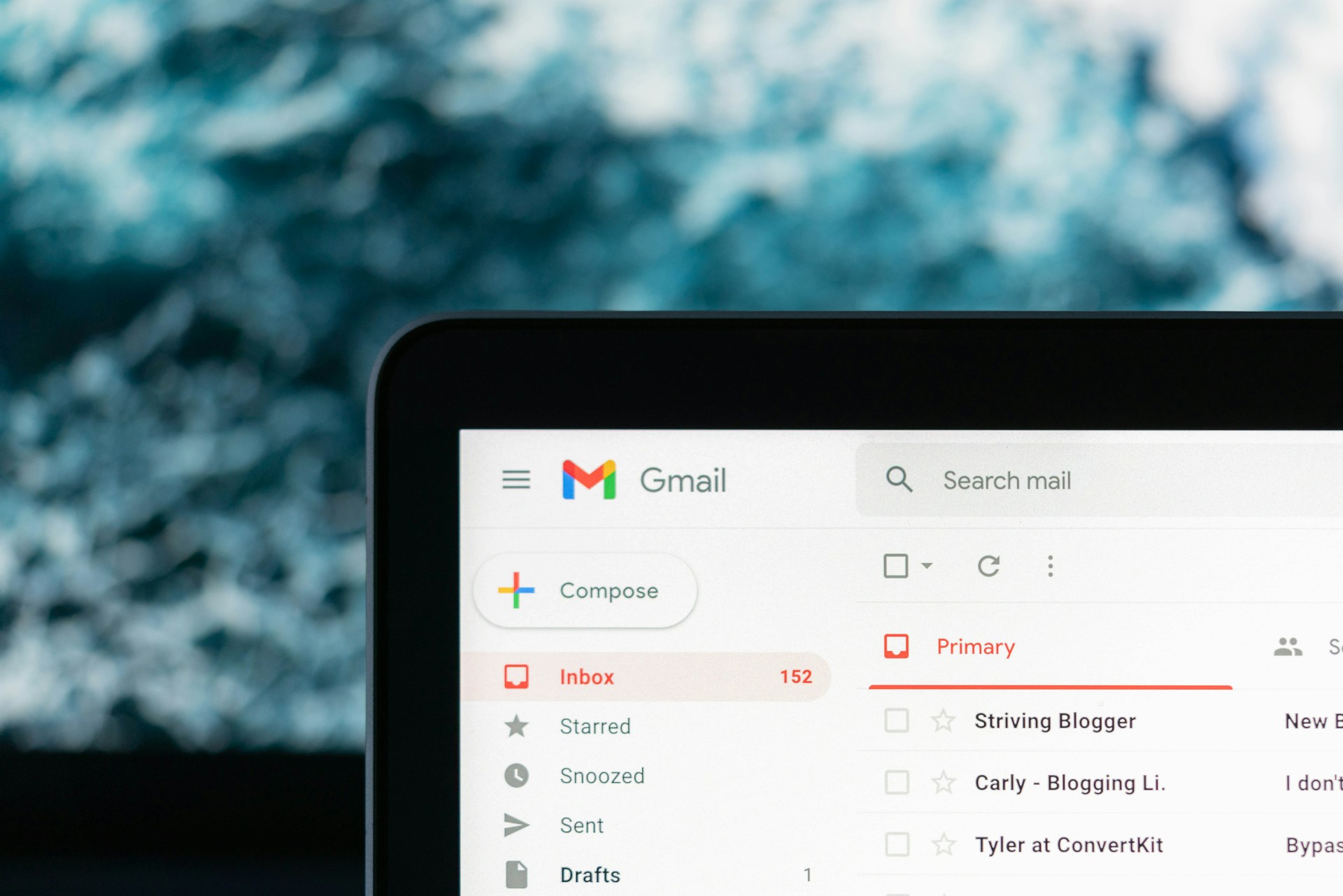
// Recruitment Technology, Recruitment Strategies
Email Deliverability in Recruitment: Complete Guide for 2025
12/08/2025
13 MIN
In 2025, recruitment success depends on more than writing a good email. If your message never reaches the inbox, you’ve already lost the opportunity to connect with the candidate or client you worked hard to identify. Email deliverability is now a core skill for modern recruiters.
The challenge for UK recruitment teams is clear. Spam filters are smarter, privacy regulations are stricter, and inboxes are crowded. According to Wix data, 61% of email users only glance at an average email for 8 seconds before deciding whether or not to act on it.
Standing out requires more than sending in bulk – it calls for a well-timed, relevant approach that feels personal to the recipient. Applicant Tracking Systems (ATSs) and recruitment CRMs can help. By allowing recruiters to manage campaign timing, personalise messaging, and track engagement, these tools make it easier to reach the right people at the right moment.
In this guide, we will explore the principles of email deliverability in recruitment and how smart campaign management can improve engagement, speed up responses, and lead to more placements.
What does email deliverability mean in recruitment?
At its simplest, email deliverability is the ability of your message to reach the recipient’s inbox rather than being filtered into spam or blocked entirely. In recruitment, it determines whether your carefully crafted outreach is even seen by a potential candidate or client.
Email providers like Gmail, Outlook and Yahoo use complex algorithms to decide where each message ends up. They assess factors such as:
- Whether the sender’s domain is authenticated
- The volume and frequency of sent emails
- Engagement levels, such as opens and replies
- Spam complaints and bounce rates
For recruiters, poor deliverability means fewer opportunities to connect, slower response times, and more missed placements. Even a well-written job opportunity email will fail if it never makes it past the spam filter. According to EmailToolTester, 96.8% of people report receiving spam messages, with 10.5% of emails ending up in recipients’ spam folders.
This is where structured campaign management comes in. By using an ATS or recruitment CRM to segment mailing lists, personalise outreach, and schedule sends at the right time, recruiters can improve their sender reputation and raise the likelihood of landing in the inbox.
The most effective teams monitor open and reply rates regularly, using that data to refine subject lines, messaging style, and sending patterns. Email deliverability is not a “set and forget” exercise.
It’s an ongoing process of testing, adjusting and maintaining good sending practices – one that can have a measurable impact on how quickly you connect with people and move them through your recruitment pipeline.
Key takeaway: Improving deliverability is an active process. By managing lists, personalising content, and tracking performance, recruiters can keep more messages in inboxes and speed up the hiring process.
How can authentication and a consistent sender identity improve email delivery?
One of the biggest factors in email deliverability is whether email providers can verify that you are who you say you are. This is where authentication comes in.
Three protocols work together to improve your email deliverability rate:
SPF (Sender Policy Framework)
Confirms that the server sending your email is authorised to send on behalf of your domain.
DKIM (DomainKeys Identified Mail)
Adds a digital signature to your email, proving it hasn’t been altered in transit.
DMARC (Domain-based Message Authentication, Reporting and Conformance)
Sets rules for what happens if SPF or DKIM checks fail and provides reports on authentication activity.
Without these authentication protocols in place, your messages are more likely to be blocked or flagged as suspicious by email and/or internet service providers. For recruiters, that can mean critical candidate or client outreach never reaches its destination due to poor email campaign deliverability scores.
Sender identity is equally important for your email program. A consistent “From” name and address helps recipients recognise and trust messages coming from your email infrastructure.
Switching between multiple variations – or worse, using impersonal addresses like no-reply@ – can reduce open rates and increase the risk of being marked as spam, as these can appear as invalid email addresses can can negatively affect your efforts.
You can avoid permanent delivery failures by taking the time to go through the technical setup early on. Signing up for Google Postmaster or Microsoft SNDS can help you get insights into your sender reputation with specific internet service providers.
Most modern ATS and recruitment CRM systems allow you to manage sender settings centrally, ensuring every campaign goes out under a trusted and consistent identity. Combining proper authentication with recognisable sender details not only improves deliverability but also builds confidence with your audience before they’ve even opened your message.
Key takeaway: Authenticate your domain and keep your sender details consistent. It improves the chances of reaching the inbox and helps build trust with candidates looking for a new job and clients before they read your message.
Why does personalised outreach improve email content engagement?
Why generic outreach harms deliverability
Generic, one-size-fits-all emails filled with spam trigger words are not only less engaging for recipients, they can also harm your email deliverability. When messages feel irrelevant, recipients are more likely to ignore them or mark them as spam – both of which can lower your sender reputation.
Personalisation beyond the first name
In recruitment, personalisation is more than adding a first name to the subject line. It’s about tailoring the message to the recipient’s role, industry, and previous interactions with you.
A developer might respond well to concise, skills-focused messaging, while a hiring manager might want detail on timelines, budget, and candidate availability. Avoid spam traps by tailoring your messages so that your emails land where they’re supposed to – straight into your recipient’s inbox.
How recruitment tools help personalise at scale
Modern ATS and recruitment CRM tools make it easier to personalise at scale. Some allow you to use AI notes from previous calls or meetings to inform your outreach, ensuring that follow-up messages feel like a continuation of the conversation rather than a cold introduction. This kind of relevance signals to email providers that your content is valued, which can improve deliverability.
The measurable impact of personalised outreach
The impact of personalisation on recruitment results is clear. When Ocean Red Partners used tailored outreach informed by previous candidate conversations, they achieved a +47% increase in candidate response rates. That improvement not only boosted engagement but also reduced the time it took to progress candidates through the hiring process.
Key takeaway: Relevant, personalised outreach is good for both your recipients and your sender reputation. Tailoring messages to each audience increases the chances of reaching the inbox and getting faster, more positive responses.
When is the best time to send recruitment emails for maximum impact?
Even the best-written recruitment email can underperform if it’s sent at the wrong time. Email providers factor engagement speed into their algorithms, meaning messages that get quick opens and replies are more likely to reach the inbox in the future.
1. Understand your audience’s schedule
Clients and candidates operate on different timetables, and failing to account for it can negatively impact your email engagement.
- Candidates may check their personal email early in the morning, during lunch breaks, or after work.
- Clients often work to structured business hours and may be more responsive mid-morning or early afternoon.
2. Factor in UK working patterns
Public holidays, regional events, and even seasonality can affect response rates. For example, sending at 9:00 am on a Monday bank holiday is unlikely to perform well.
3. Test and adjust send times
What works for one role or industry may not work for another. A technology recruitment campaign might get better engagement in the evening, while an executive search campaign could perform best during business hours.
4. Use your email deliverability tools to schedule smartly
Most ATS and recruitment CRM systems allow you to set send times in advance. This enables you to:
- Run candidate outreach at peak personal email times.
- Schedule client campaigns for optimal business-hour engagement.
- Avoid sending outside recipient time zones if recruiting internationally.
Key takeaway: Send timing directly affects both deliverability and engagement. By scheduling campaigns when recipients are most likely to respond, recruiters can increase open rates, protect sender reputation, and move opportunities forward faster.
How should you tailor emails for candidates versus clients?
The way you write to a candidate should not be the same as how you approach a client. Different audiences have different priorities, and your email tone, structure, and content should reflect that. A mismatch can hurt engagement — and poor engagement can reduce your overall deliverability.
When writing to candidates, focus on:
- Relevance to their skills and goals – Link the role directly to their experience.
- Clarity – Keep the email concise, making it easy to scan.
- Opportunity highlights – Salary, benefits, flexibility, and career progression.
- Next steps – Clear instructions on how to express interest or apply.
When writing to clients, focus on:
- Value proposition – How your candidates will solve a hiring problem or fill a role faster.
- Market insight – Data points or trends that position you as a knowledgeable partner.
- Professional tone – Polished and confident, without unnecessary jargon.
- Credibility – Short proof points or examples to back up your claims.
Tips for both audiences:
- Personalise your tone to match the relationship stage — more casual for established contacts, professional for new ones, at least until they warm up to your emails.
- Avoid overloading with links or attachments in the first message. URL shorteners can help, but also mask where your links actually go, so keep that in mind.
- Keep subject lines relevant and specific to the recipient’s context.
Key takeaway: Tailoring your message to the audience improves both relevance and trust. The more aligned your email is with the recipient’s priorities, the more likely it is to get opened, read, and acted upon — which in turn supports strong deliverability.
How can tracking campaigns improve deliverability over time?
Monitoring campaign performance is essential for protecting your sender reputation and improving email deliverability. The more engaged your audience is, the more likely future emails are to land in their inbox rather than the spam folder.
Why deliverability report tracking matters
Email providers use engagement signals such as opens, replies, and click-throughs to determine whether your messages are valuable. Campaigns with strong engagement rates help maintain — and even improve — your inbox placement rate over time.
Key metrics to monitor
- Open rates – A measure of subject line effectiveness and whether your emails are making it into inboxes.
- Reply rates – These reveal how compelling and relevant your message is to the recipient.
- Bounce rates – High figures here can damage your sender reputation and reduce deliverability.
- Spam complaints – Even a small percentage can impact email deliverability.
How recruitment tools help
Modern ATS and CRM systems give recruiters access to performance dashboards that display these metrics in real time. This allows you to:
- Spot underperforming campaigns quickly to re-evaluate your bulk emails.
- Refine subject lines, message tone, or send times to improve delivery rates.
- Focus on the best-performing campaigns to increase placements and decrease spam issues.
Importantly, while these systems provide the data you need, your content and contact information remain yours. Data should not be used to train external AI models, ensuring that your competitive insights stay in-house.
Key takeaway: Consistently email marketing deliverability tracking and acting on campaign performance data helps maintain good deliverability. By focusing on what works, recruiters can strengthen engagement, protect their sender reputation, and close more placements.
How can recruiters serve both clients and candidates effectively?
Recruiters face a unique email deliverability challenge: they need to maintain strong communication with two distinct audiences, each with different expectations and needs. Treating them the same can lead to generic messaging that fails to engage either group.
1. Recognise the different priorities
Candidates want to understand how a role benefits them — career growth, work-life balance, salary, and skills fit. Clients care more about speed to hire, candidate quality, and market insight.
2. Tailor your messaging
Customising your approach improves both engagement and email deliverability.
For candidates: highlight role-specific benefits, keep messages clear and concise, and outline next steps.
For clients: focus on business outcomes, recruitment process efficiency, and data that shows your market expertise.
3. Avoid one-size-fits-all campaigns
Sending the same email to both audiences risks alienating them. The same goes if your sending volume is too high or if you’re not working on your candidate list hygiene. Low engagement can trigger spam filters, hurting deliverability for future campaigns targeting new candidates you’ve just added to your database.
4. Use segmentation to your advantage
Most ATS and CRM systems allow recruiters to segment mailing lists by audience type. This ensures each message is relevant, timely, and aligned with the recipient’s priorities.
Key takeaway: Effective recruitment outreach means speaking the right language to the right audience. Segmented, relevant campaigns improve engagement rates for both candidates and clients, protecting your sender reputation and supporting faster placements.
Why should deliverability improvement be an ongoing process?
Email deliverability is not a box you tick once. It requires consistent attention and adjustment to maintain strong inbox placement over time. Engagement patterns shift, provider algorithms evolve, and what worked a few months ago may not be as effective today.
Recruitment teams that treat deliverability as an ongoing process are better positioned to keep their messages visible, relevant, and timely. This means reviewing performance regularly and making small, consistent changes rather than relying on a single big overhaul.
Email service providers’ deliverability improvement checklist for recruiters:
- Review open and reply rates after each campaign to identify trends.
- Refresh subject lines and body copy regularly to avoid repetitive content.
- Adjust send times based on recipient behaviour data.
- Keep candidate and client lists up to date to minimise bounce rates.
- Personalise content to maintain high engagement and reduce spam complaints.
- Maintain consistent sender identity and domain reputation.
By integrating these habits into your workflow, you can protect your sender reputation and ensure your outreach remains effective. The recruiters who refine their approach after every campaign are the ones most likely to see sustained improvement in both deliverability and response rates.
Key takeaway: Strong email deliverability is the result of small, regular adjustments. By treating it as part of your ongoing recruitment process, you can keep engagement high and inbox placement consistent.
What are the most common questions (FAQs) recruiters ask about email deliverability?
Yes. Personalised emails are more likely to be opened and replied to, which signals value to email providers. This improved engagement helps protect your sender reputation and increases the likelihood that future messages will reach the inbox.
It depends on your audience. Candidates often respond outside standard working hours, while clients are usually more responsive during the business day. Testing different times and tracking results is the best way to gain a deep understanding and healthy sending habits to avoid negative engagement.
Yes. Most ATS and CRM platforms allow you to create separate campaigns for different audiences, ensuring each message is relevant. This helps maintain engagement and deliverability across all your outreach.
Open rate tracking itself won’t hurt deliverability, but overreliance on it can be misleading. Some email clients block tracking pixels, so combine open rate data with reply and click-through rates for a more accurate picture of your email performance.
In most recruitment platforms, respondents are automatically flagged for positive engagement in your pipeline. This helps you prioritise follow-up and keeps your campaigns focused on people who are showing interest in the application process.
In a future-proofed system like Atlas, no. Your campaign content, contact lists, and performance data will remain private to your business and not be used for external AI training.
Why is email deliverability the bridge from inbox to placement?
In recruitment, every placement starts with a successful connection — and in today’s market, that connection depends on a good email deliverability rate. From authentication and timing to personalisation and ongoing optimisation, each element plays a role in ensuring your outreach is seen, opened, and acted upon.
For agency recruiters, mastering deliverability is about more than hitting KPIs. It’s about building relationships with the right people at the right time, improving response rates, and moving candidates and clients smoothly through the hiring process. Every positive signal brings many benefits to your pipeline and moves the needle forward.
The good news is that you don’t have to manage it all manually. The best AI recruiting software gives you the tools to personalise campaigns, schedule sends for maximum impact, track engagement, and refine your approach with each sequence.







